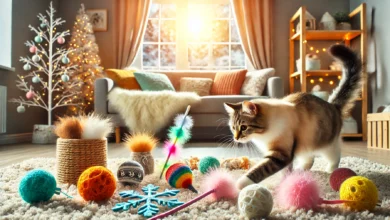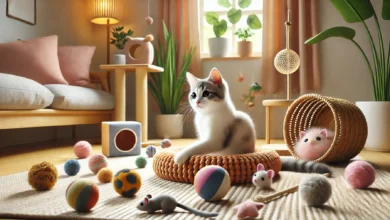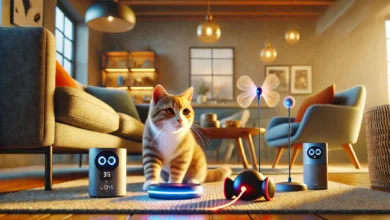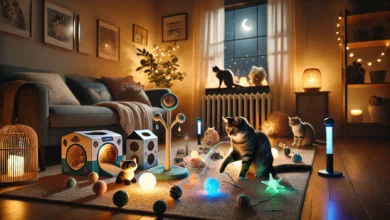Exploring Educational Toys for Cats
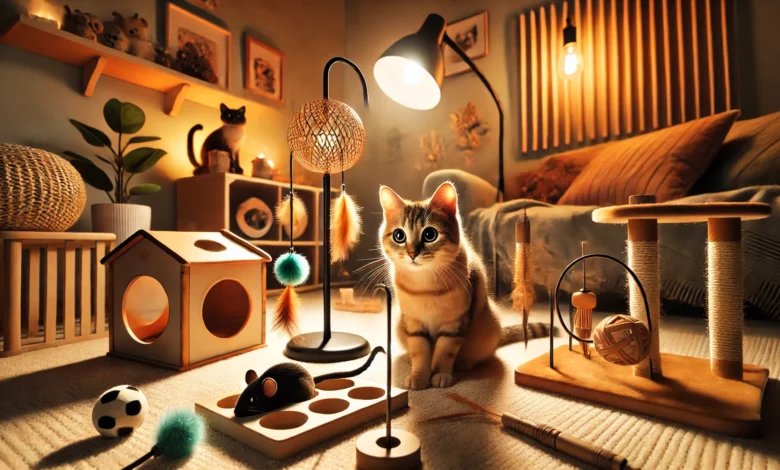
Cats are naturally curious and playful animals; their nature demands that they must engage in one activity or another at all times to keep their mind and body working properly.
Being a cat owner, you definitely know how much fun they have while surveying any new thing or atmosphere around them.
But then, educational toys add extra value for your feline.
These toys are especially designed to practice mental and physical capabilities, keeping your cat sharp, active, and happy.
Whether it’s a playful kitten or an adult, more laid-back cat, the right educational toys can make all the difference.
Let’s delve into the realm of educational toys and explore just how they have the potential to make your cat’s life much more enriching.
Table of Contents
Why Cats Need Educational Toys
Play toys for cats have more uses beyond giving your cat pleasure and entertainment; they are quite important for their mental and physical development.
Like humans, cats need something to intrigue their minds to avoid boredom, which can result in undesired behavior, such as scratching the furniture or excessive meowing.
These kinds of toys stimulate your cat’s brain to think, solve problems, and give an outlet to their natural instincts.
Apart from keeping your cat mentally alert, educational toys can positively impact their physical health.
Every time cats chase or pounce on a toy, they get a workout, helping them maintain an excellent weight and improve their agility.
Over time, such active play strengthens muscles and helps prevent obesity, which is common for domesticated cats.
Benefits of Mental Stimulation
When you present your cat with educational toys, you’re mentally challenging them.
Since your cat is naturally a predator, most toys simulate the behavior of prey, encouraging your cat to think and strategize while performing their ‘hunting’ activity.
Puzzle or challenging toys that provide an exciting experience will keep your cat occupied and alert.
- Prevents boredom and unwanted behaviors
- Stimulates problem-solving skills
- Improves mental acuity in cats of all ages
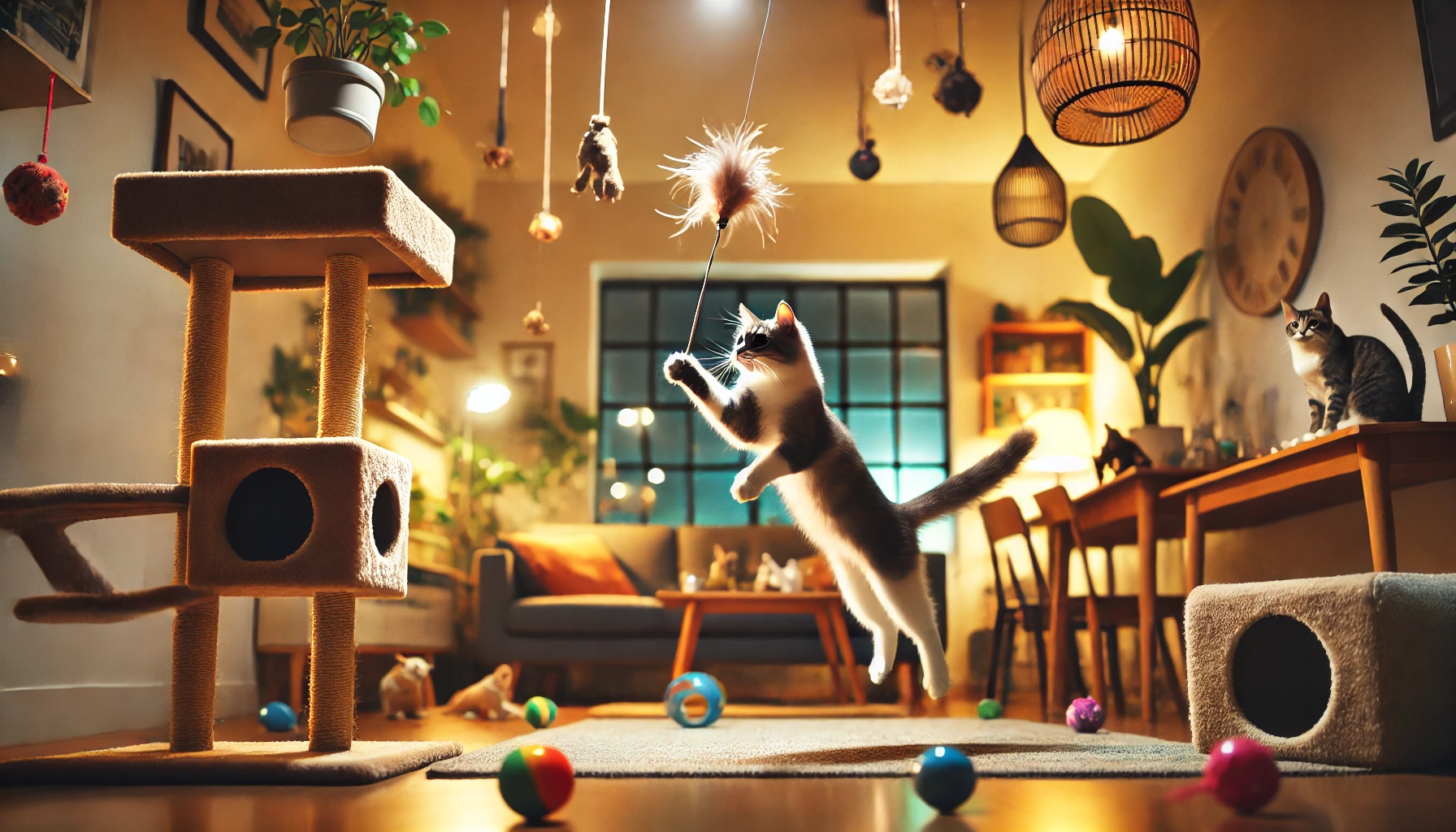
Positive Effects on Physical Health
While stimulating your cat’s mind is crucial, physical exercise is just as important.
Activity toys allow you to engage your cat in movement—either by batting at a ball, jumping toward a motorized prey, or chasing a laser beam.
Such exercise keeps your cat healthy and reduces stress while enhancing cardiovascular circulation.
- Stimulates regular physical activity
- Helps prevent obesity and related health issues
- Improves coordination and reflexes
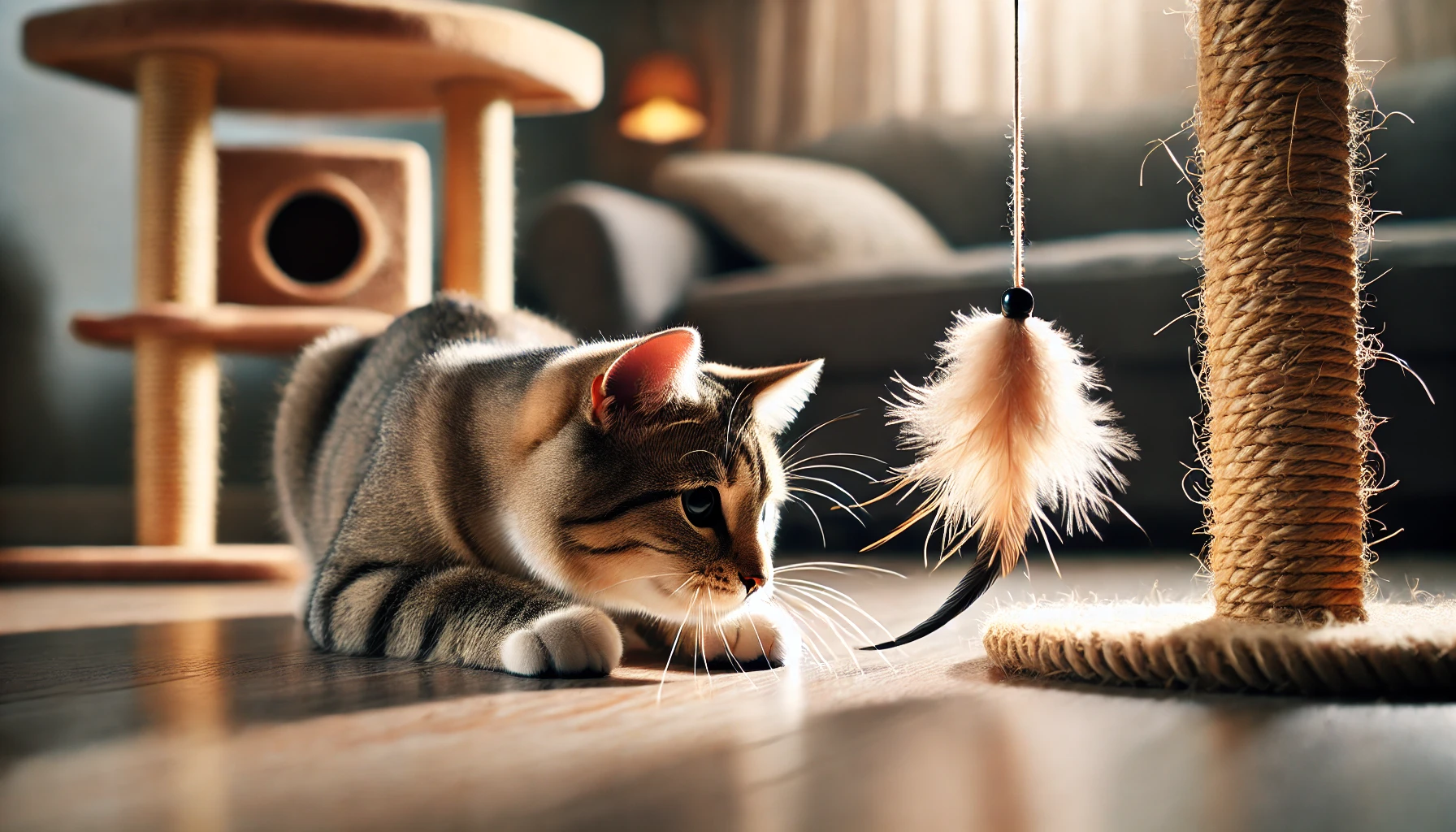
Encouraging Natural Instincts
Being born hunters, cats can express their natural instincts through educational toys in a safe environment.
Whether stalking a feather toy or solving puzzles for treats, these gadgets mimic the kind of activities they would engage in if they were in the wild.
This keeps them sharp and prevents laziness or disinterest.
- Encourages curiosity and play
- Prevents behavior problems due to boredom
Educational toys help cats stay mentally alert and physically active, preventing boredom and promoting overall health.
Types of Educational Cat Toys
How you choose an educational toy for your kitty makes quite a big difference in keeping them mentally and physically occupied.
A whole range of educational toys is widely available that can stimulate different aspects of your cat’s natural behavior: hunting, chasing, and solving problems.
These toys will not only entertain but also help develop and refine cognitive and physical skills in your cat, creating a satisfying and enriching experience.
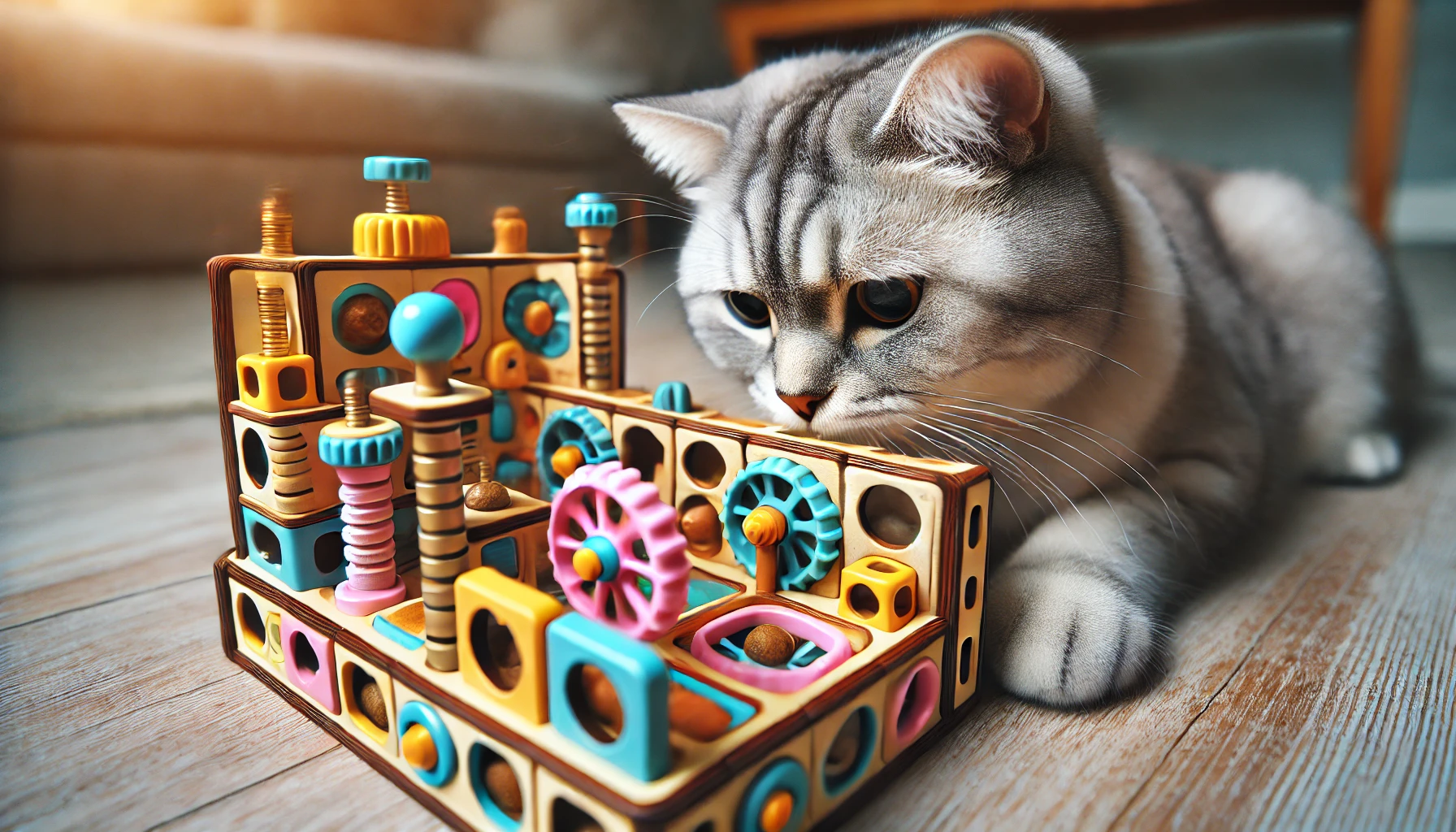
Interactive Puzzle Toys
Interactive puzzle toys are great ways to stimulate your cat’s mind.
Most puzzle toys require your cat to work for treats or solve small challenges to earn a reward.
They can stimulate hunting behavior, as cats have to think and handle the toy with both paws and noses to achieve their goal.
Common examples include treat-dispensing balls and boards with hidden compartments, where your cat must figure out how to get to the treats.
- Encourages problem-solving and patience
- Great for cats of all ages, especially indoor cats
- Provides mental stimulation and satisfies hunting instincts
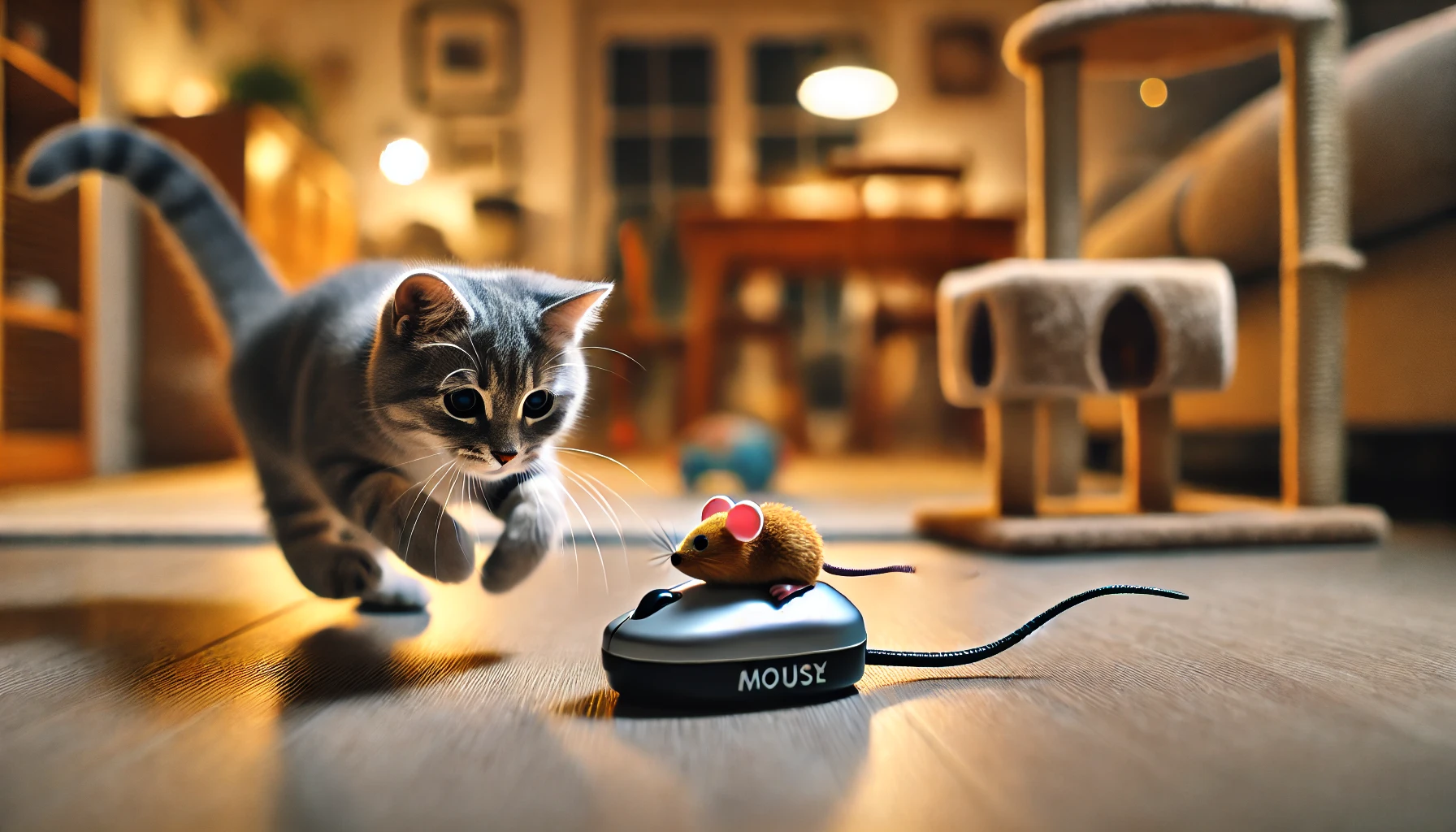
Motorized Toys for Active Play
Motorized toys are excellent for keeping chase- or pounce-loving cats entertained.
These toys operate independently and mimic the erratic movements of small prey.
Cats love the excitement of trying to ‘catch’ the toy, and the unpredictable movement keeps them engrossed for a long time.
Examples of motorized toys include automated laser pointers, motorized mice, and moving feather toys.
- Improves physical activity and agility
- Stimulates your cat’s natural predatory instincts
- Can be used when you’re away to keep your cat occupied
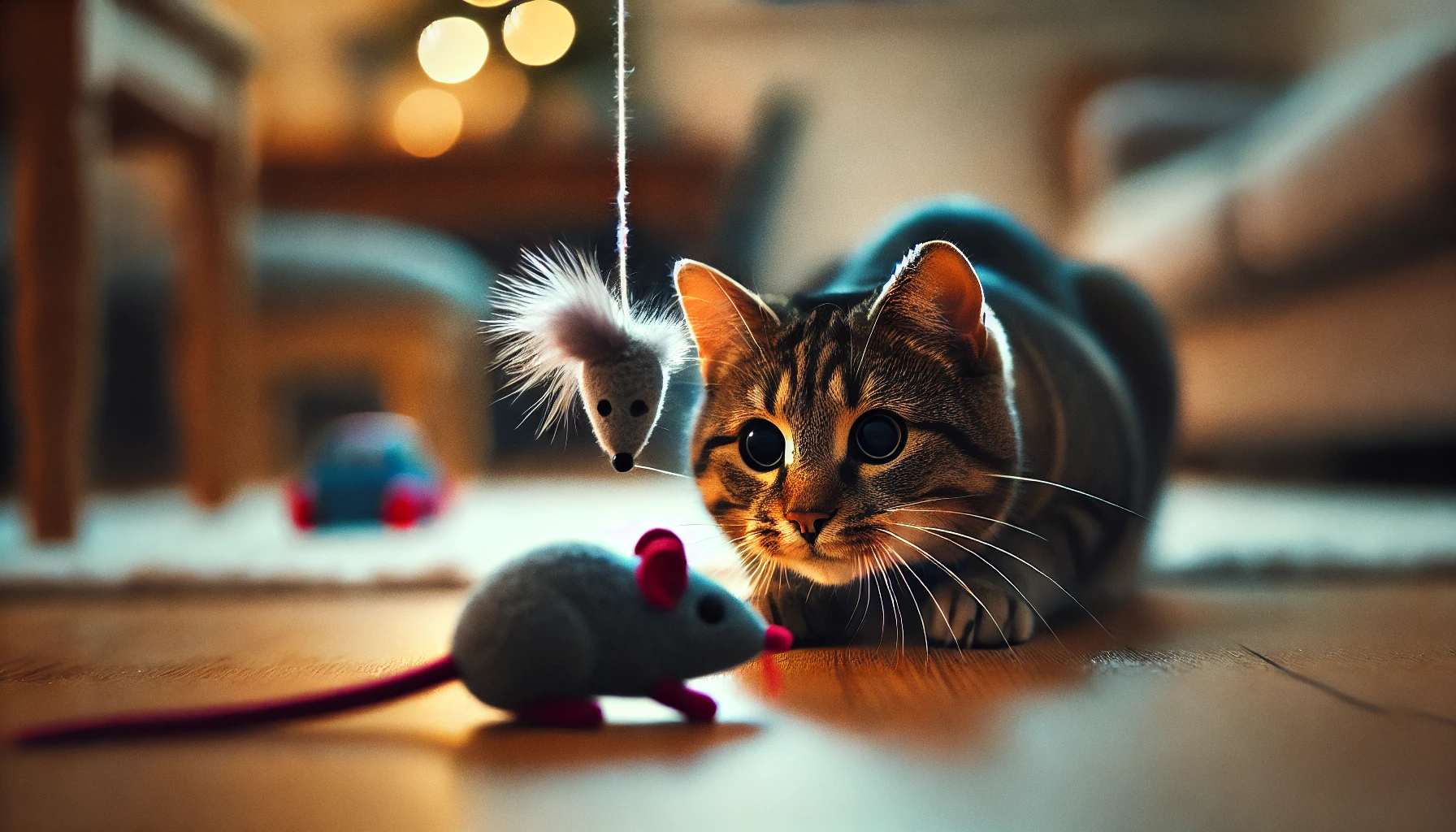
Toys That Mimic Hunting Behavior
Cats are natural hunters, and toys that stimulate this behavior offer numerous benefits for their psychological and physical health.
These toys usually imitate the movements and sounds of prey, encouraging your cat to stalk, pounce, and chase.
Examples include feathered toys, toys with bells, and plush mice that can be tossed or dangled on a string.
- Imitates natural hunting movements
- Great for physical exercise and mental stimulation
- Provides an outlet for your cat’s hunting instincts
There are various types of educational toys available to keep your cat mentally and physically stimulated, including interactive puzzle toys and motorized toys.
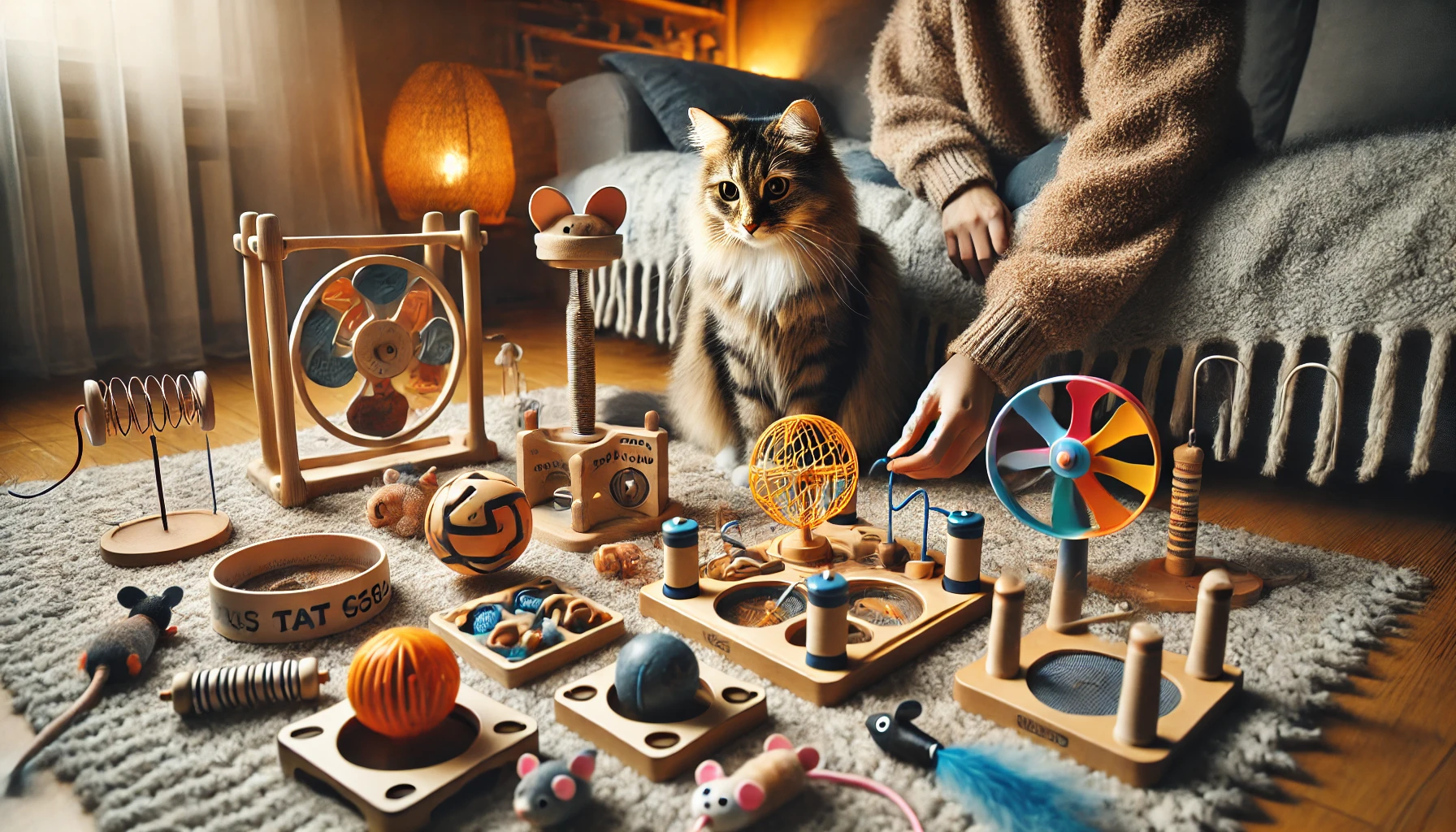
How to Choose an Appropriate Educational Toy for Your Cat
In choosing the perfect educational toy for your cat, there are many factors that one ought to consider.
A high-quality toy should engage your cat while satisfying its mental and physical needs.
From interactive puzzles to toys that stimulate hunting instincts, the right set of educational toys can make a significant difference once you understand what best suits your cat.
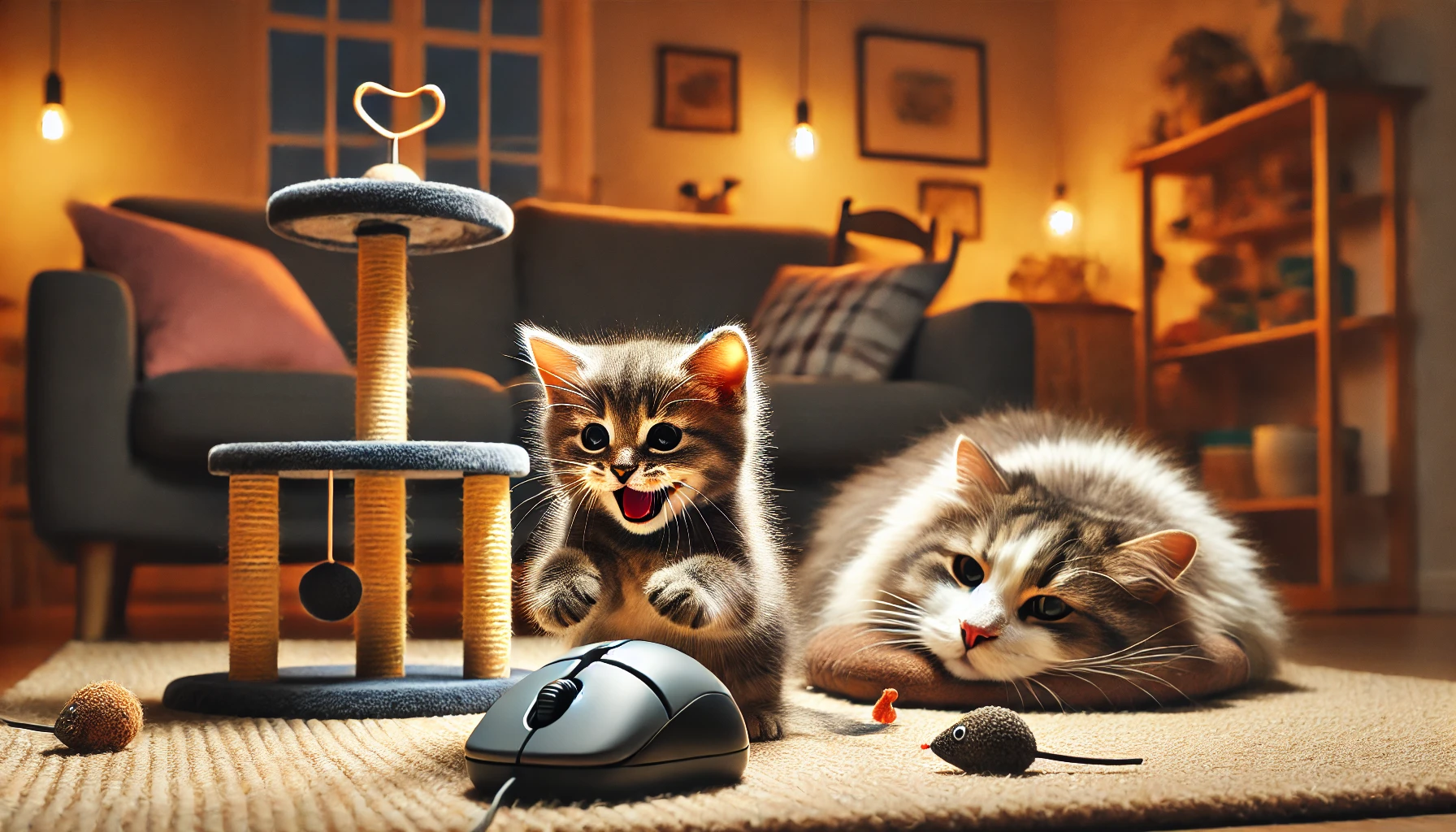
Consider Your Cat’s Age and Activity Level
The first thing to consider is the age and activity level of your feline friend.
Kittens are full of energy and need more stimulating toys, such as motorized ones or feather wands.
As cats grow older, they may prefer slower, mentally stimulating toys, such as puzzle feeders or treat-dispensing toys.
The toy should match the energy and curiosity of your cat, ensuring that it keeps them engaged.
- Kittens may prefer fast-paced toys with lots of action
- Older cats might enjoy toys with mental challenges
- Consider how active your cat is daily when choosing toys
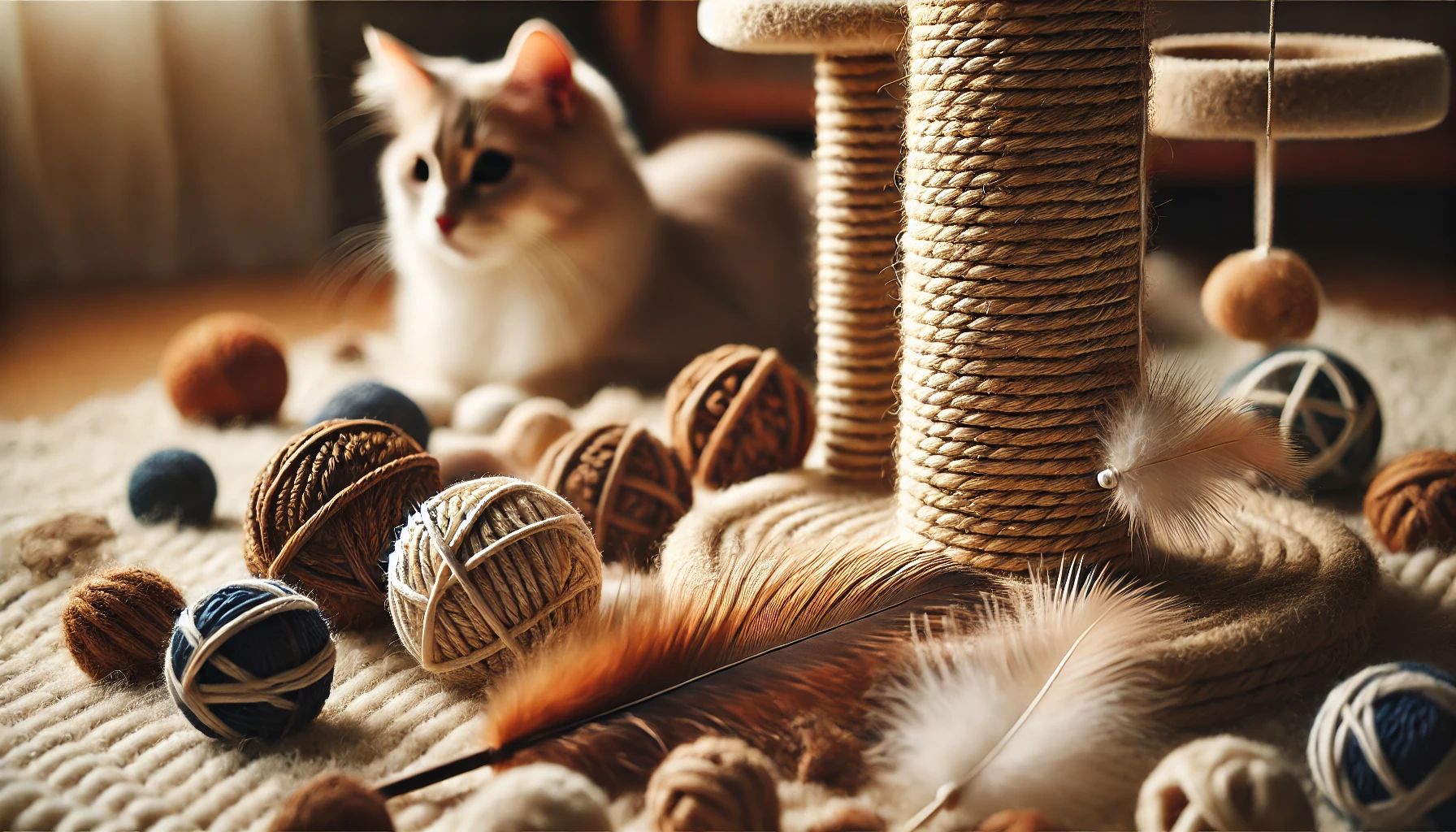
Materials and Durability
Another important factor is the material and durability of the toy.
Cats can sometimes be quite rough with their toys, especially if the toy involves a lot of swatting or pouncing.
It’s essential to invest in toys made from sturdy, non-toxic materials that can withstand your cat’s play sessions.
Natural materials like sisal, feathers, and wood are great choices for cats, as they mimic the textures they would encounter in the wild.
- Choose materials that are durable enough to endure rough play
- Opt for non-toxic materials that are safe for your cat
- Natural materials, such as feathers and sisal, enhance the toy’s appeal
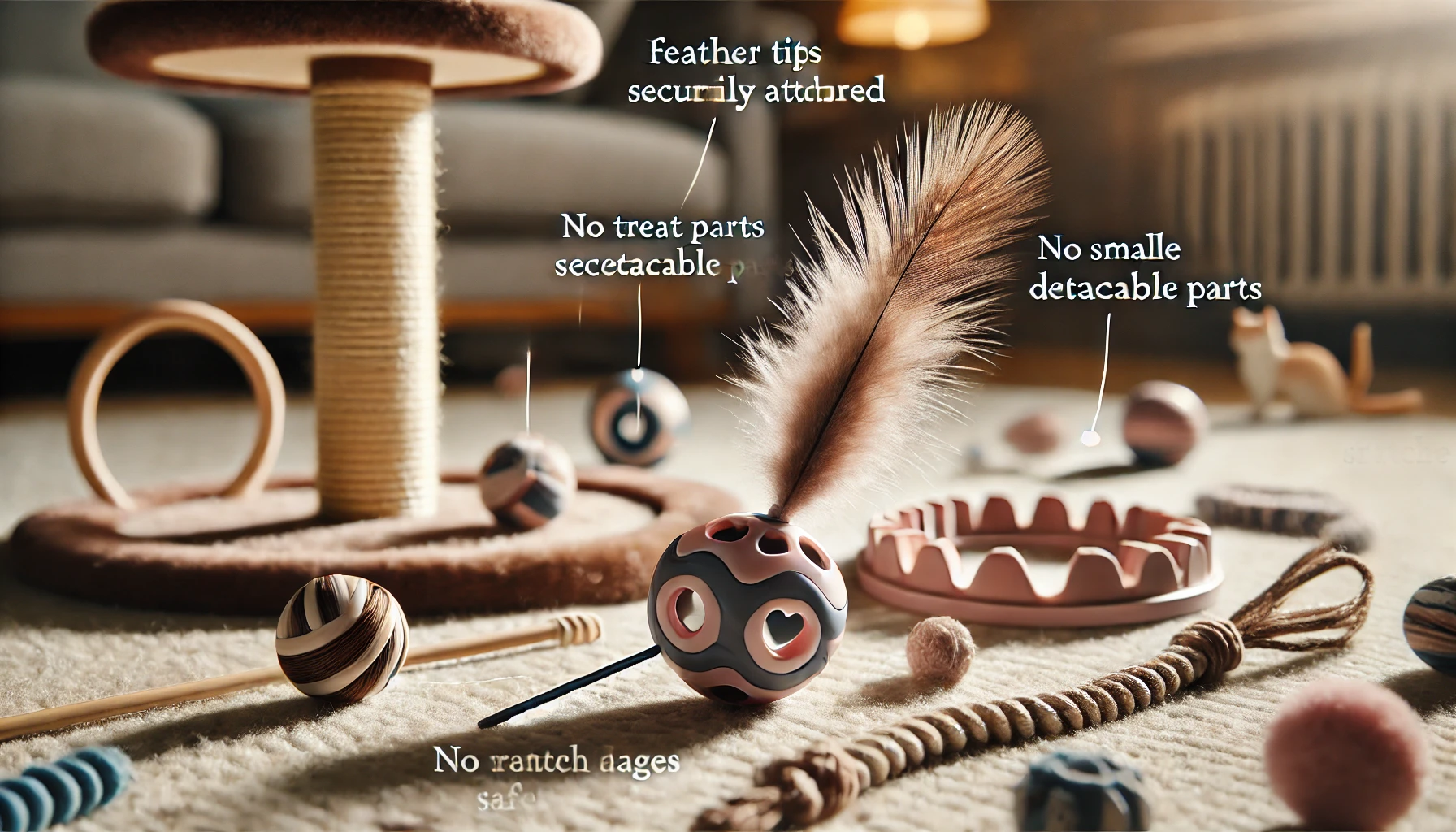
Safety Features to Consider
Safety should always come first when selecting any toy for your cat.
Ensure that the toy doesn’t have small parts that can be easily swallowed, strings that could tangle your cat, or sharp edges that could injure them.
Whenever you introduce a new toy, always supervise your cat to ensure they are playing safely.
- Avoid toys with small parts that can easily detach and be swallowed
- Watch out for sharp edges that could harm your cat
- Always supervise your cat during the first playtime to ensure safety
Consider your cat’s age, activity level, and preferences when choosing toys, ensuring they stay entertained and engaged.
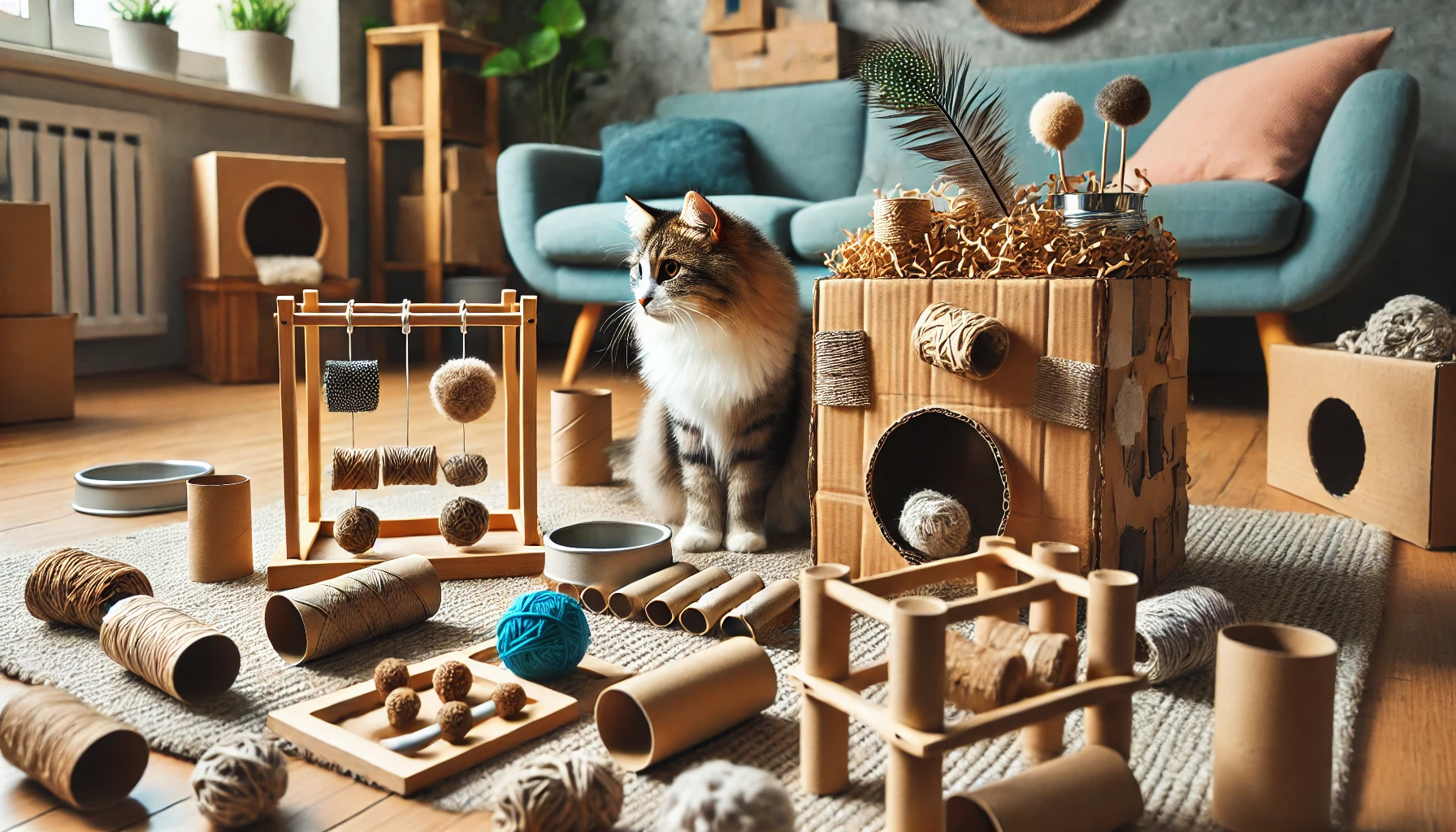
Do-It-Yourself Educational Toys: The Less Expensive Alternative
There are numerous store-bought educational toys available for cats.
Sometimes, though, the best things in life are the ones you make yourself.
DIY educational toys are very budget-friendly and offer a fun and creative way to keep your cat entertained and mentally stimulated.
These toys can easily be made with household items and provide just as much engagement and enrichment as store-bought options.
Moreover, making your own toys allows you to customize them to match your cat’s preferences.
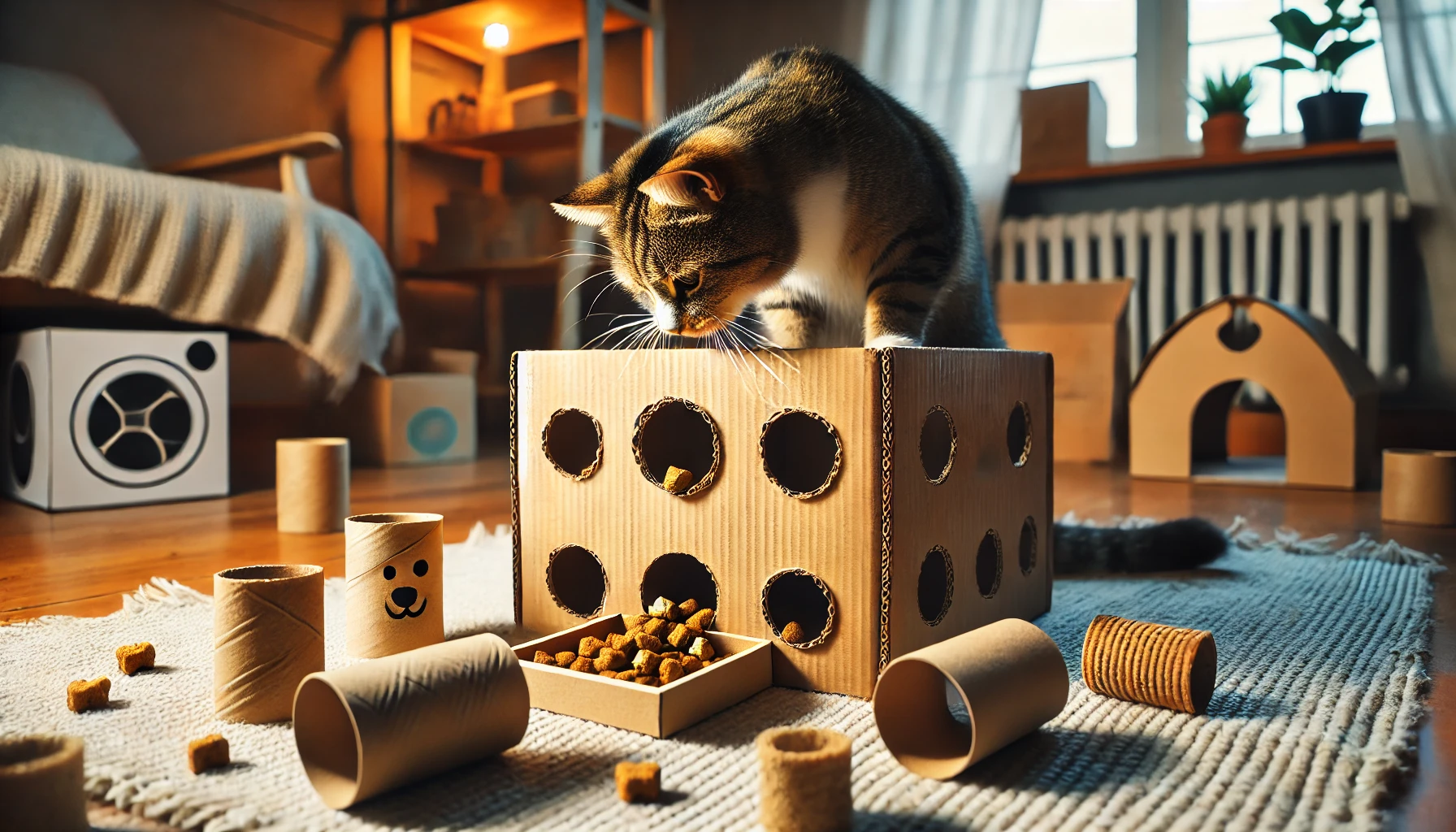
Homemade Puzzle Feeders
Puzzle feeders help give your cat mental stimulation by allowing them to engage in problem-solving behavior.
It is quite easy to make your own puzzle feeder using materials around your house, such as toilet paper rolls and plastic containers.
For example, you can cut holes in a container large enough for your cat to reach in and fish out treats.
Alternatively, you can place a few treats in a cardboard box and cut small openings, so your cat has to work for the reward.
- Stimulates the mind and problem-solving abilities
- Excellent for slowing down fast eaters
- Made from simple materials like cardboard and containers
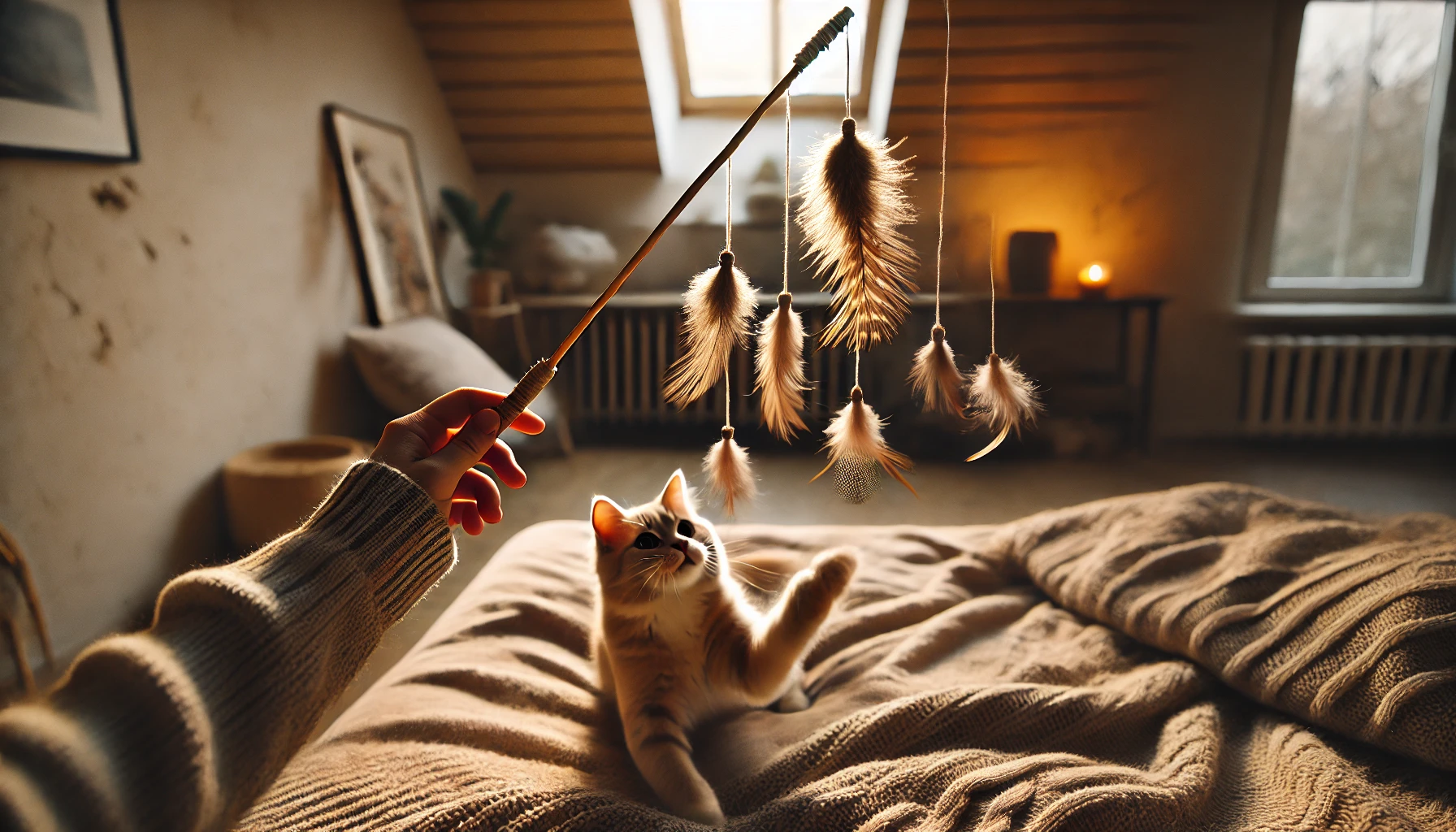
Simple DIY Wand Toys
Wand toys are among the top favorites for cats, as they imitate the movements of prey.
You can make a homemade wand toy using a simple stick or string by attaching feathers, pieces of cloth, or even a small stuffed animal at the end.
Your cat can spend hours chasing, pouncing, and batting at the dangling object.
- Easy to make with simple materials
- Encourages physical exercise and hunting instincts
- Can be personalized with various attachments
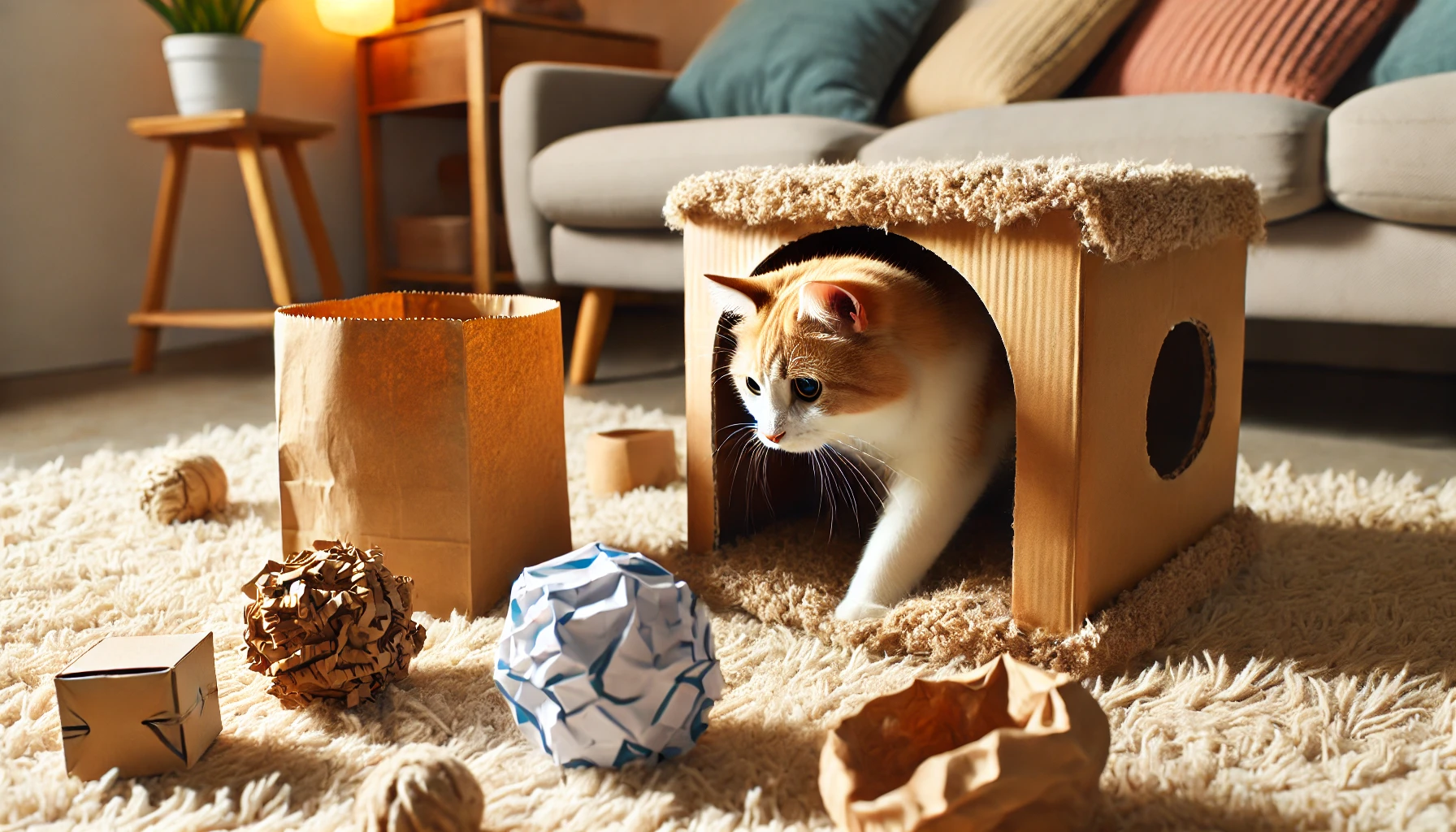
Recycling Household Items for Cat Play
Many common household items can serve as playful toys for your feline friend.
Cardboard boxes, paper bags, and crumpled-up papers can keep your cat busy and amused.
Cats love to explore, hide, and pounce on these objects.
You can even make a tunnel by connecting boxes or use a paper bag as a hiding spot during playtime.
- Made from common household items that would otherwise be discarded
- Encourages curiosity and investigation
- Inexpensive amusement for your feline friend
DIY educational toys made from household materials are budget-friendly and provide great mental stimulation for your cat.
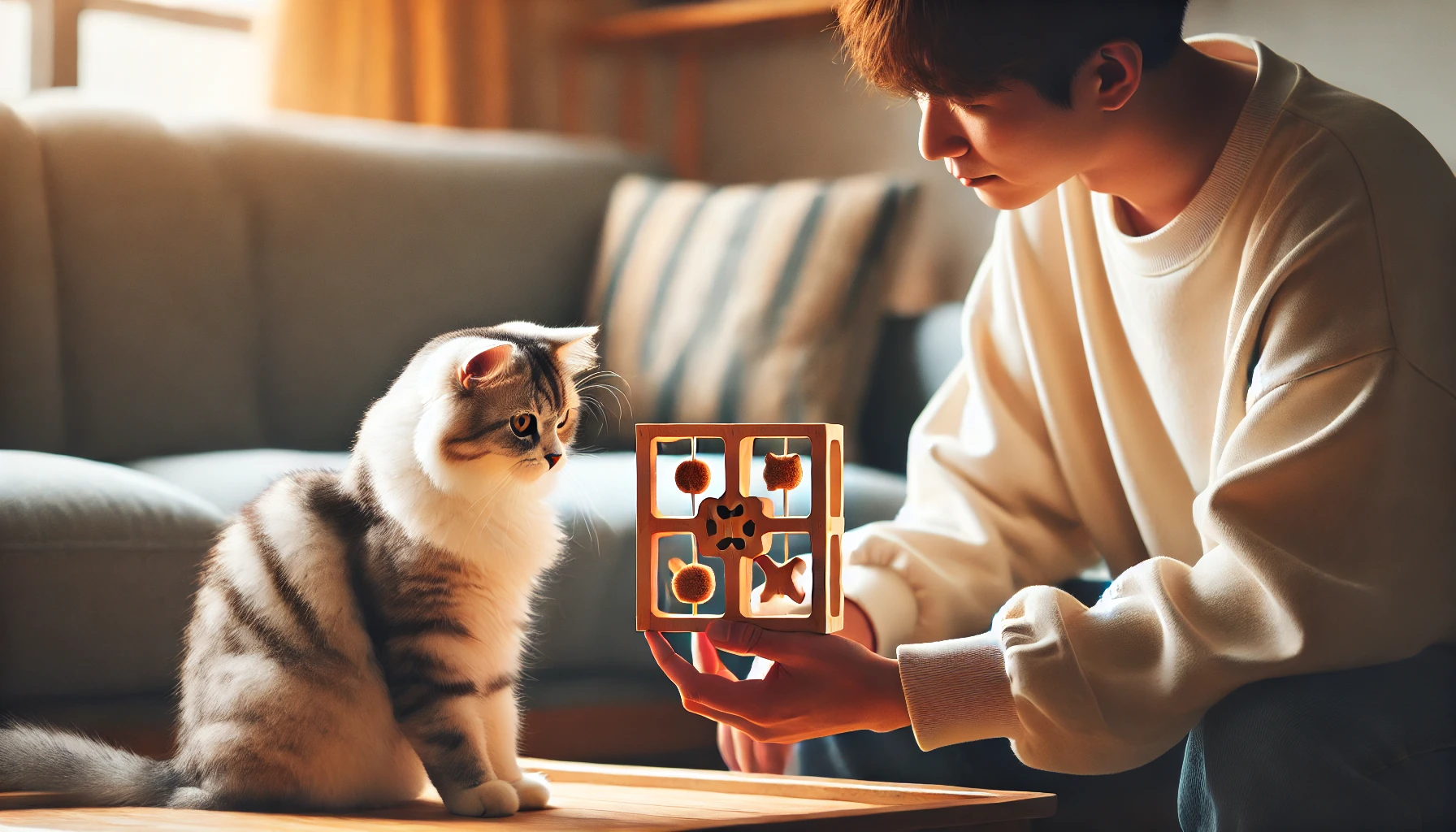
How to Introduce Educational Toys to Your Cat
Introducing your cat to educational toys can be a very rewarding experience for both you and your cat, but it has to be done correctly.
Cats are naturally curious yet cautious about new objects being introduced into their surroundings.
To make sure your cat gets the most from the new educational toys, follow a few simple strategies that will help them grow comfortable with and stimulated by their toys.
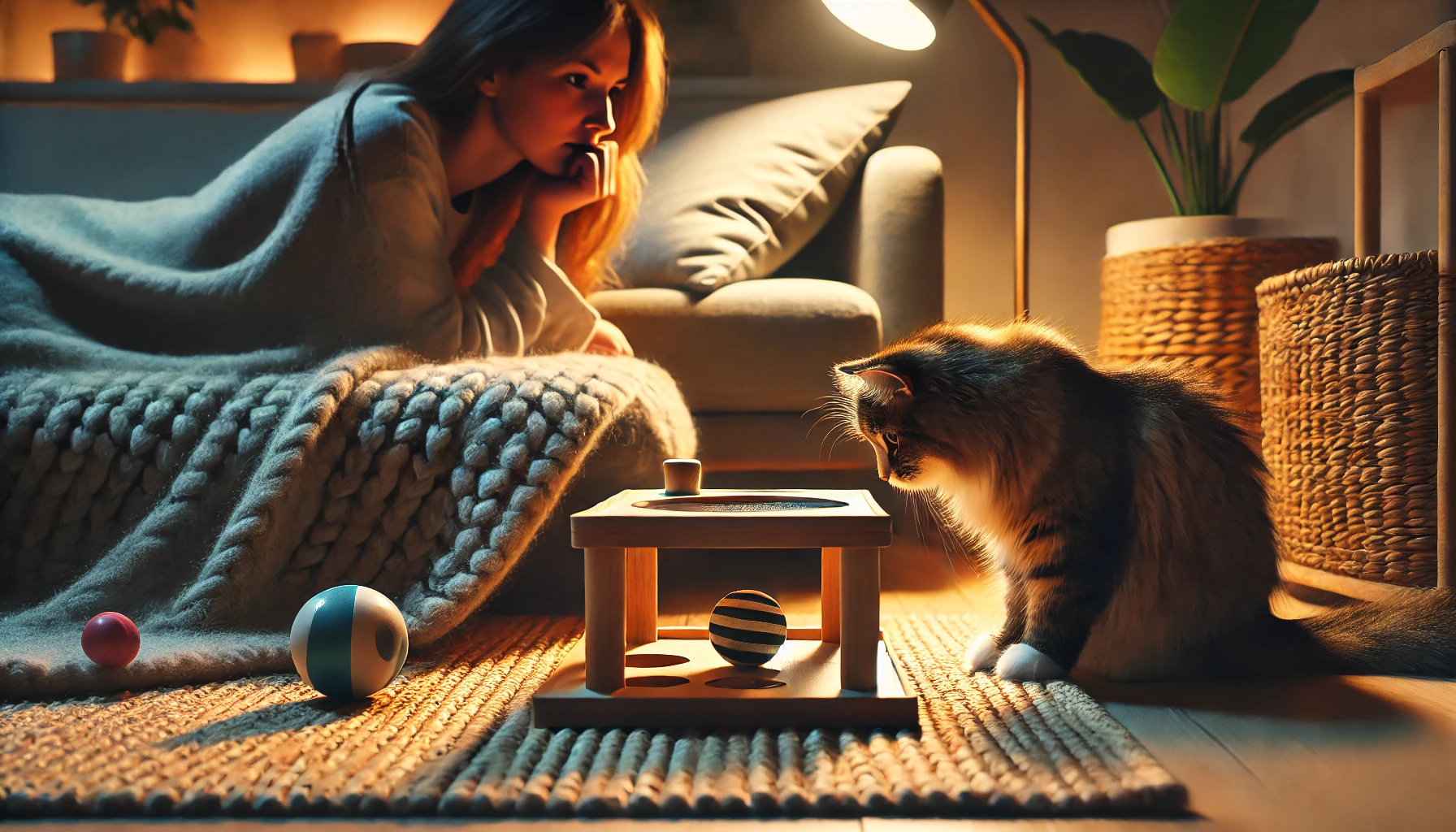
Slow Introduction for Shy Cats
If your cat is shy or timid, it is best to introduce new toys gradually.
Place the toy in an environment where your cat feels safe, allowing them to investigate it at their own pace.
Some cats may take time to get used to new toys, especially interactive or motorized ones.
Be patient, and slowly encourage play by gently interacting with the toy yourself.
You can also rub a small amount of catnip onto the toy to make it more inviting.
- Place toys in familiar, comfortable areas
- Let your cat investigate at their own pace
- Increase interest in the toy with catnip
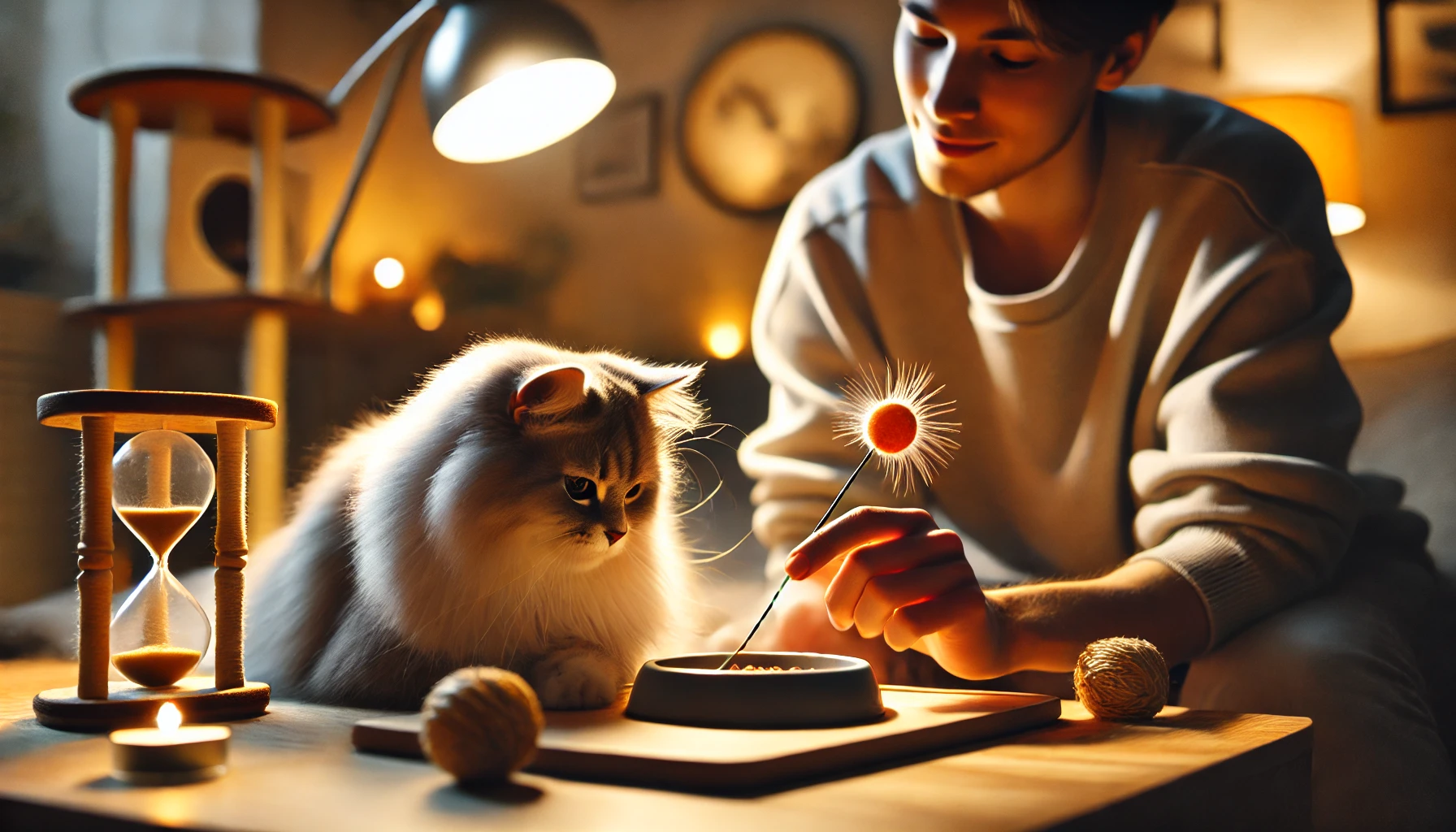
Establishing a Play Routine
Cats thrive on routine, and creating a play schedule will help your cat become more accustomed to their new toys.
Dedicate specific times during the day for play sessions, using educational toys to stimulate both mental and physical activity.
Regular playtime reduces boredom and allows your cat to incorporate the toy into their daily routine.
- Establish a consistent play schedule
- Introduce new toys into daily play sessions
- Helps reduce boredom and encourages regular activity
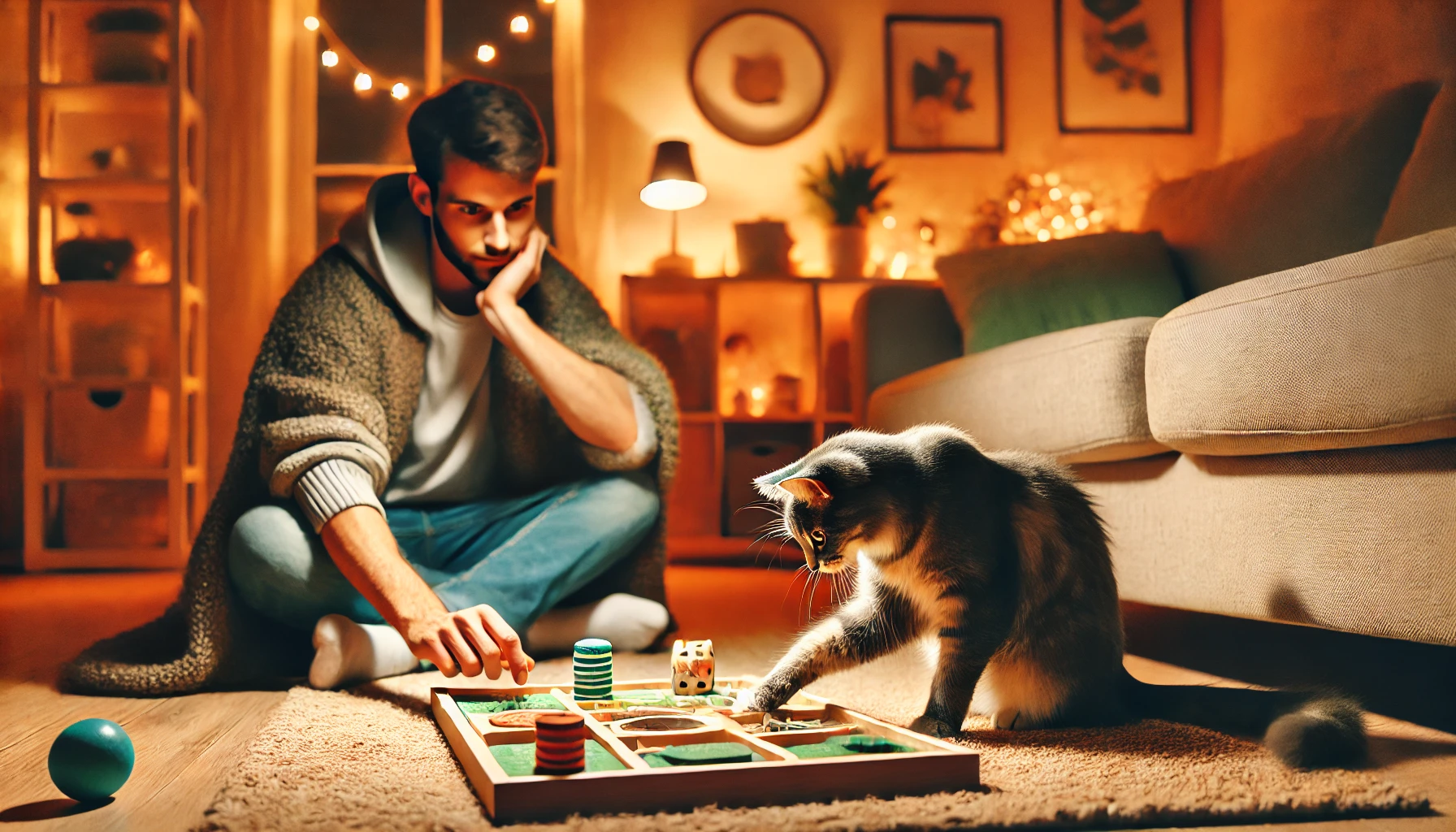
Monitoring Your Cat’s Engagement
After introducing the educational toys, observe how your cat interacts with them.
Does your cat seem interested or indifferent?
If necessary, adjust the type of toy or the way it is presented.
Some cats prefer specific textures, sounds, or movements, so it’s important to be flexible in experimenting with different toys to find what excites your cat the most.
- Observe your cat’s behavior with the toy
- Change the type of toy or style of play if needed
- Be patient and flexible in finding what excites your cat
Introducing toys gradually and setting a consistent play routine helps your cat adjust and get the most from their educational toys.
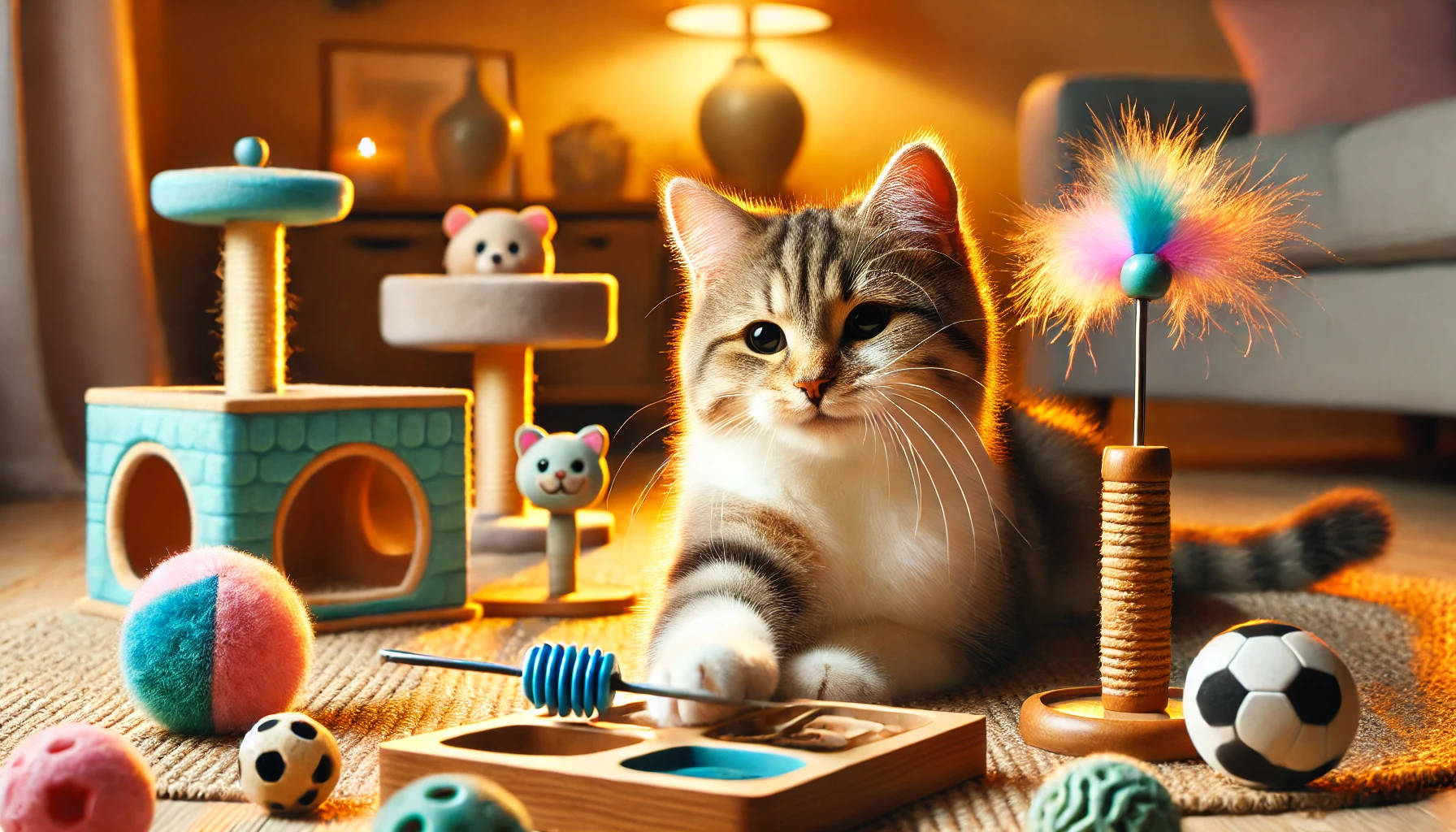
Conclusion: Enriching Your Cat’s Life with Educational Toys
Educational toys for cats open up new avenues for improvement in both their mental and physical health.
By including these toys in their daily activities, you ensure they get the much-needed stimulation, engagement, and happiness they deserve.
Whether you choose store-bought or homemade options, the key is to select toys that match your cat’s age, activity level, and natural instincts.
Educational toys come in various forms, from interactive puzzle toys that promote problem-solving to motorized toys that encourage physical activity.
With a little time and attention, selecting the right toys will not only provide fun and entertainment but also help your cat remain mentally and physically sharp.
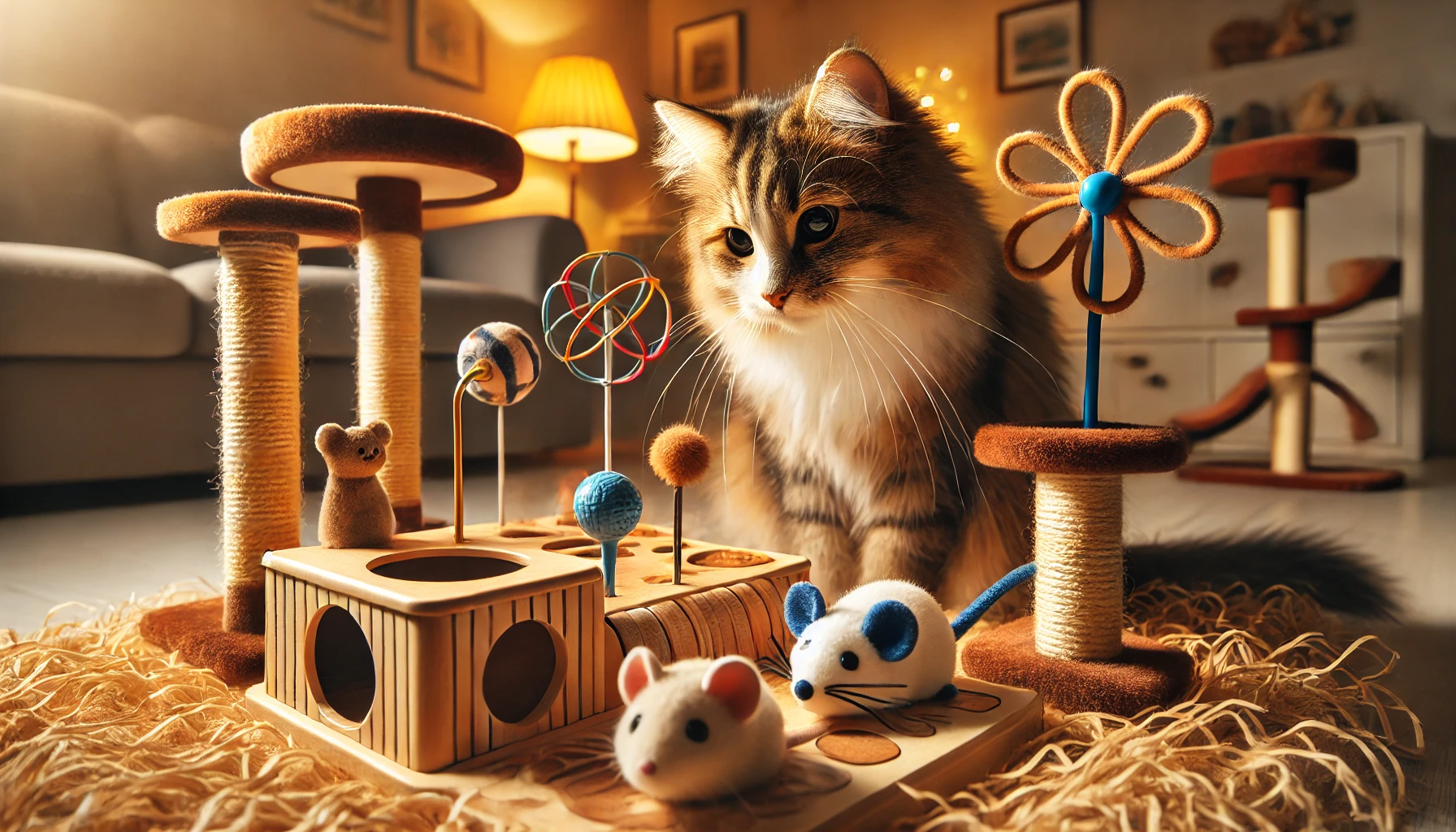
Benefits of Educational Toys for Cats
Incorporating educational toys into your cat’s life offers numerous benefits:
- Stimulates mental and cognitive abilities
- Encourages physical exercise and helps maintain a healthy weight
- Brings out natural hunting instincts
- Prevents boredom, reducing undesirable behaviors
- Strengthens the bond between you and your cat through interactive play
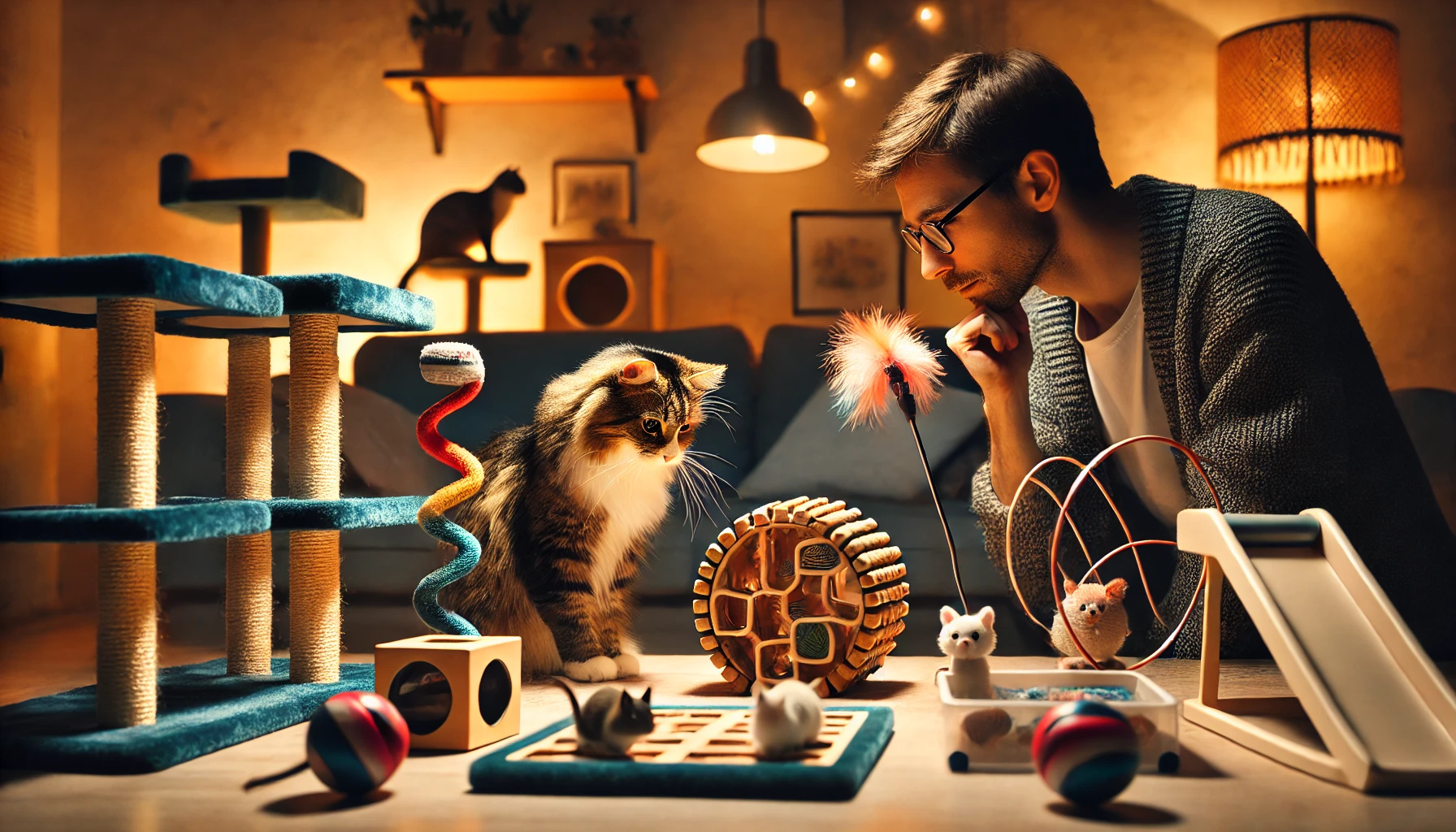
How to Choose and Introduce the Right Toys
To get the maximum benefit from educational toys, consider your cat’s age, preferences, and activity level.
Younger, more active cats may enjoy fast-paced toys, while older cats might prefer toys that offer mental stimulation.
Gradually introducing new toys, establishing a play schedule, and monitoring your cat’s interaction with the toys will ensure they make the most of their playtime.
Homemade toys are an excellent, cost-effective option for keeping your cat engaged.
By making toys tailored to your cat’s preferences, you can use simple household items to create toys that are just as effective as store-bought ones.
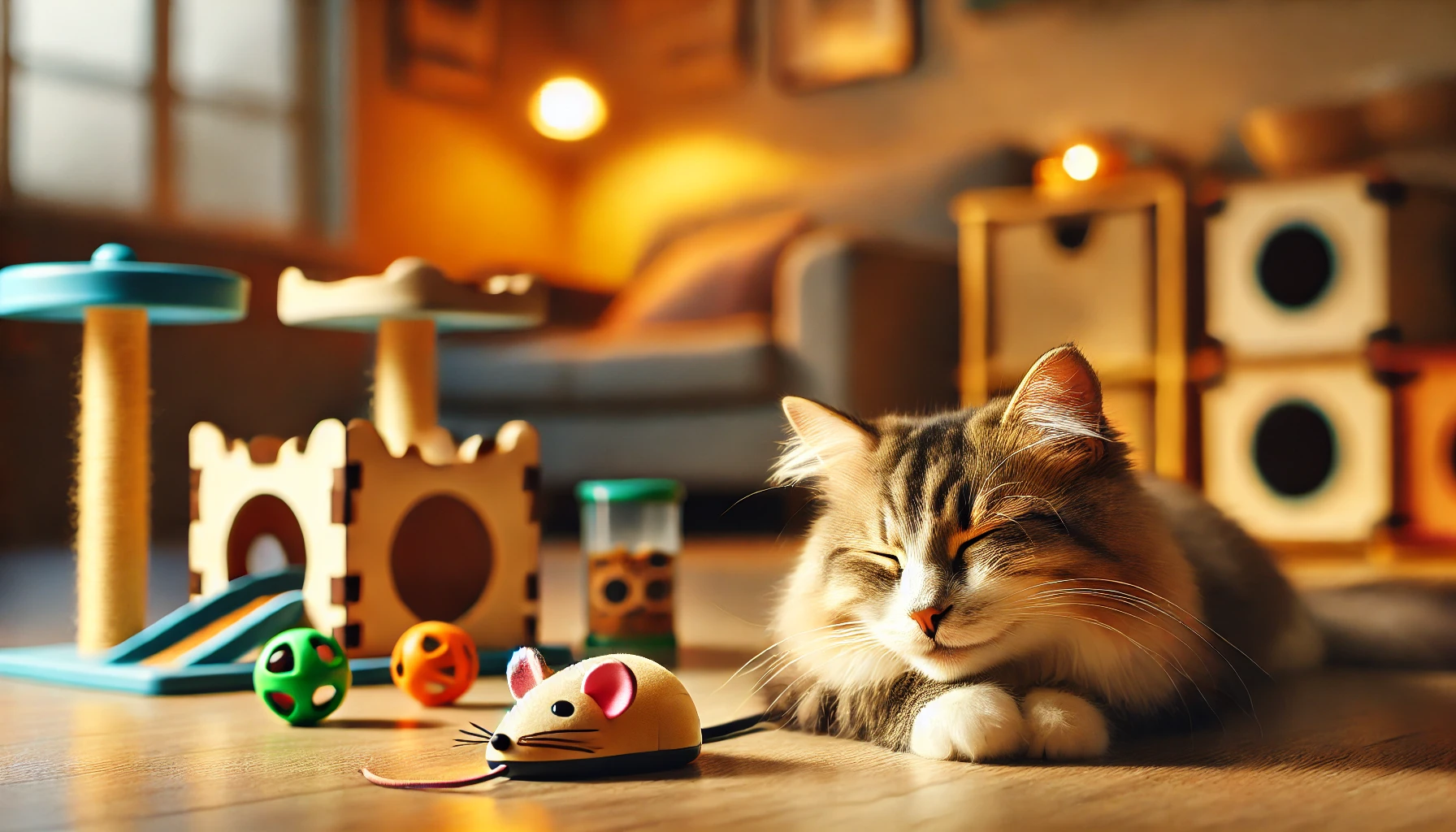
Final Thoughts
Educational toys provide more than just entertainment for your feline friend—they are invaluable tools for promoting a healthy, happy life.
By selecting toys that appeal to your cat’s instincts and needs, you are providing the mental and physical stimulation they crave.
Whether it’s a motorized toy, a DIY project, or a puzzle feeder, these toys will help your cat thrive and live a more enriched life.
Educational toys improve your cat’s mental and physical health, ensuring a happy and fulfilled life.
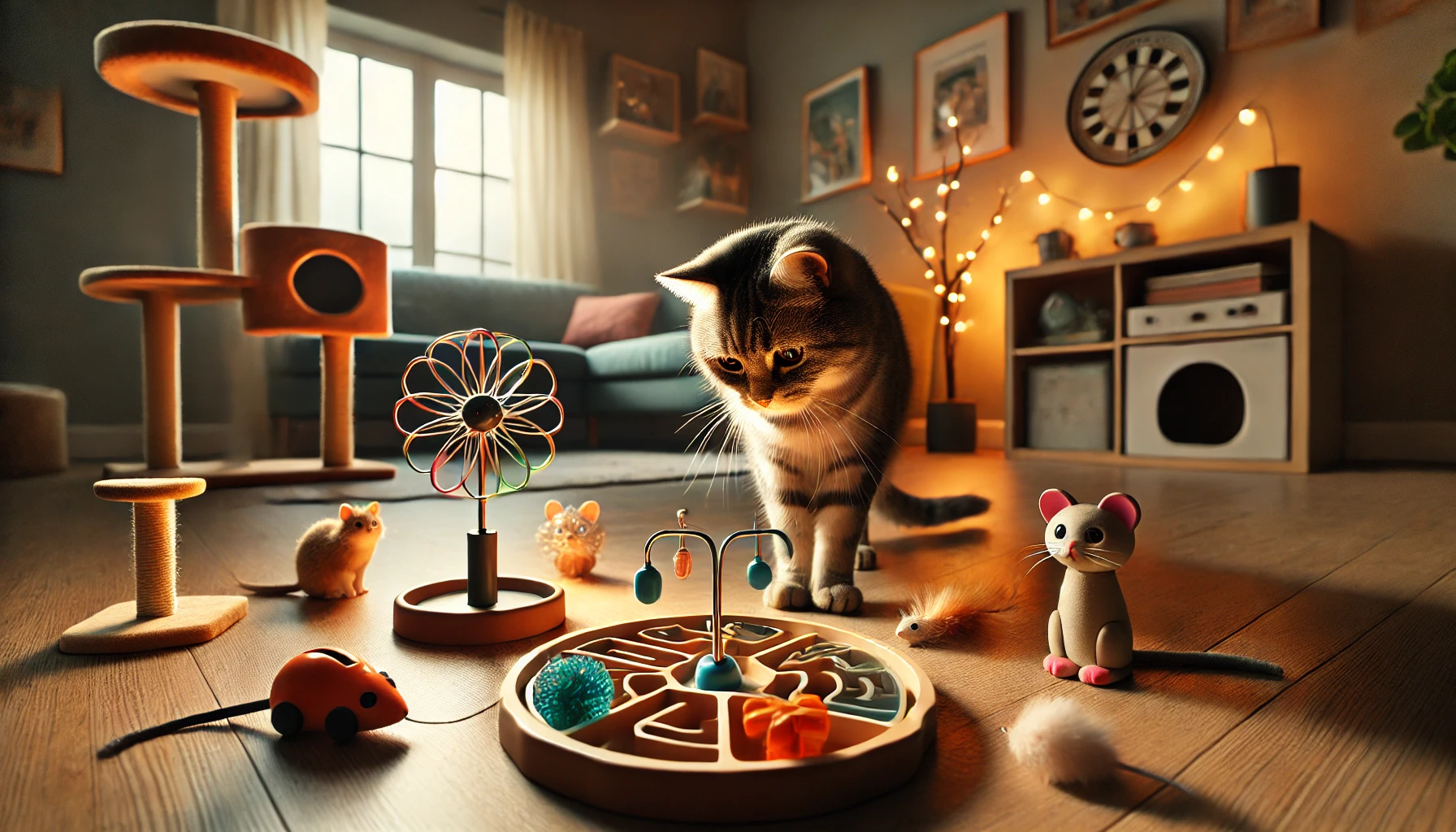
Educational Toys for Cats: Frequently Asked Questions
Below are some of the most frequently asked questions cat owners have when it comes to educational toys.
The answers will help you understand how to select, introduce, and get the best out of these toys for your feline friend.
What is the use of offering a cat educational toys?
Engaging your cat with educational toys will stimulate their mental and physical health by enhancing cognition, encouraging activity, and eliminating boredom.
They provide a way to develop natural hunting instincts and prevent negative behaviors, especially in indoor cats.
How often should I introduce new educational toys?
It is recommended to introduce new educational toys every three to four months to maintain your cat’s mental stimulation.
Rotating toys every two weeks can also help preserve your cat’s interest in existing toys.
Are homemade educational toys safe for cats?
Yes, homemade educational toys are safe as long as they are made of non-toxic materials and do not contain small parts that could be swallowed.
Always supervise your cat when introducing new DIY toys to ensure safety.
Do interactive educational toys help in managing weight?
Yes, interactive educational toys such as motorized or wand toys encourage movement and physical activity, helping to manage your cat’s weight, especially for indoor cats that may not have many opportunities for outdoor exercise.
How do I choose the best educational toy for my cat?
Consider your cat’s age, activity level, and preferences.
Kittens might enjoy active toys, while older cats may benefit more from mentally stimulating toys.
Experiment with different types to find out what your cat enjoys the most.

